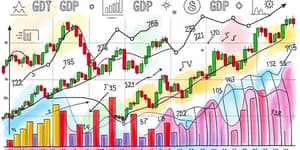
In a world driven by sound bites and daily news flashes, true market value often remains hidden beneath the surface of popular narratives.
Headlines capture our attention, but they rarely capture the full picture. When investors focus solely on a single P/E ratio or a sensational market projection, they risk overlooking critical nuances. The difference between a snapshot of fleeting sentiment and enduring value can determine the success or failure of an investment strategy.
Consider the standard Price-to-Earnings (P/E) ratio. As of June 2025, the U.S. market’s trailing twelve months P/E stands at 27.4. At face value, this number may appear moderately high—but it fails to account for economic cycles, volatile earnings, and future growth prospects.
To move beyond surface-level headlines, investors must embrace a range of valuation methods. Each approach offers unique insights and carries inherent limitations. Below, we outline the most widely used frameworks.
The Traditional P/E ratio is simple but can be skewed by recent earnings spikes or troughs. The Shiller P/E, also known as CAPE, smooths earnings over ten years to offset cyclical distortions. As of mid-2025, the Shiller P/E reads 36.1, suggesting long-term earnings trends and cycles have pushed valuations above historical norms.
Market overvaluation estimates vary from 104% to 173% above historical means depending on the methodology. The geometric mean variant indicates a 125%–182% overvaluation, painting a stark picture of potential market exuberance.
The Dividend Discount Model excels when valuing stable, dividend-paying companies. Its formula,
Stock Value = D₁ / (r – g),
relies on expected dividends (D₁), required return (r), and growth rate (g). For a mature utility stock projecting a 2% dividend growth and a 5% required return, the model provides a clear, intuitive fair value.
By contrast, the Discounted Cash Flow method suits high-growth and asset-light firms but demands careful assumptions. A modest error in projected growth or discount rate can severely distort outcomes, demonstrating why precision in input assumptions matters.
Small and medium business valuations often employ multiples of revenue or profit. In the U.S. during 2024, average sale prices hovered around 0.67× revenue or 2.57× profit for small businesses. In Europe, an EBIT multiple of 6× is common, translating €1M of EBIT into a €6M enterprise value.
However, comparables must be used with care. Sector, size, and regional dynamics create significant dispersion. A tech startup with a unique intellectual property portfolio commands a premium far above a standard service provider.
Beyond pure numbers, investors must consider macro factors like interest rate trends. With rates trading near 2025 projected peaks and expectations of gradual declines, the cost of capital will shift, impacting valuations across sectors.
Moreover, headline figures such as market cap or simple P/E can mask extraordinary items and accounting quirks. A company may report one-time gains that boost earnings artificially, driving the P/E down and creating an illusion of undervaluation.
How can investors apply these insights every day? Follow this actionable framework:
Consider a digital agency with $400,000 in revenue that sold at a 0.60× revenue multiple, valuing the firm at $240,000. Compare that to a midmarket European company generating €1M EBIT that commanded a 6× multiple, arriving at a €6M enterprise value before subtracting net liabilities.
At the public company level, tech giants may trade at P/E multiples exceeding 30 due to high growth expectations. Yet when you peel back cash flow forecasts and owner’s earnings, the margin for error widens significantly.
To truly navigate beyond the headlines, investors must cultivate both quantitative rigor and contextual depth. Market sentiment can carry prices to unsustainable heights, and simplistic metrics can lead to misjudgment.
By combining diverse analytical approaches, stress-testing assumptions, and grounding decisions in real-world comparables, you can build a robust valuation framework. This process enables you to identify opportunities where sentiment diverges from intrinsic value, and to sidestep potential pitfalls when markets become frothy.
Ultimately, uncovering true market value is both art and science. With a disciplined approach, you can move past fleeting headlines and toward an investment strategy built on enduring principles and meaningful insights.
References













